Here we will run the NVIDIA GeForce RTX 4090 FE through Unigine-related benchmarks.
Unigine Superposition
The latest Benchmark from Unigine is Superposition, which measures your graphics cards’ extreme performance and stability.
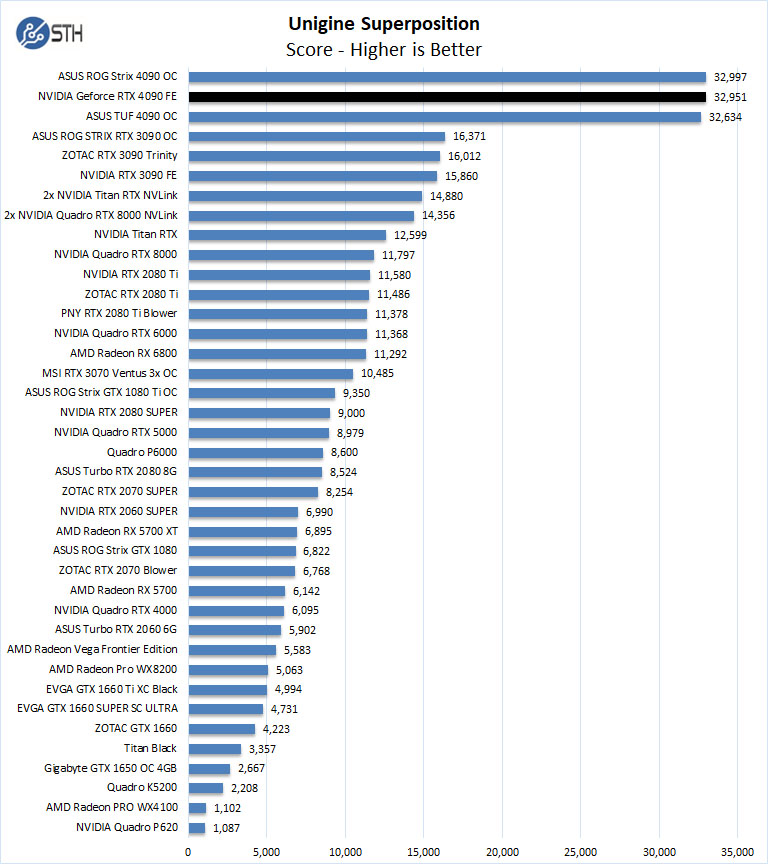
For this benchmark, we set the resolution to 4K or 3840×2160 to push the graphics card as hard as we could.
Unigine Heaven
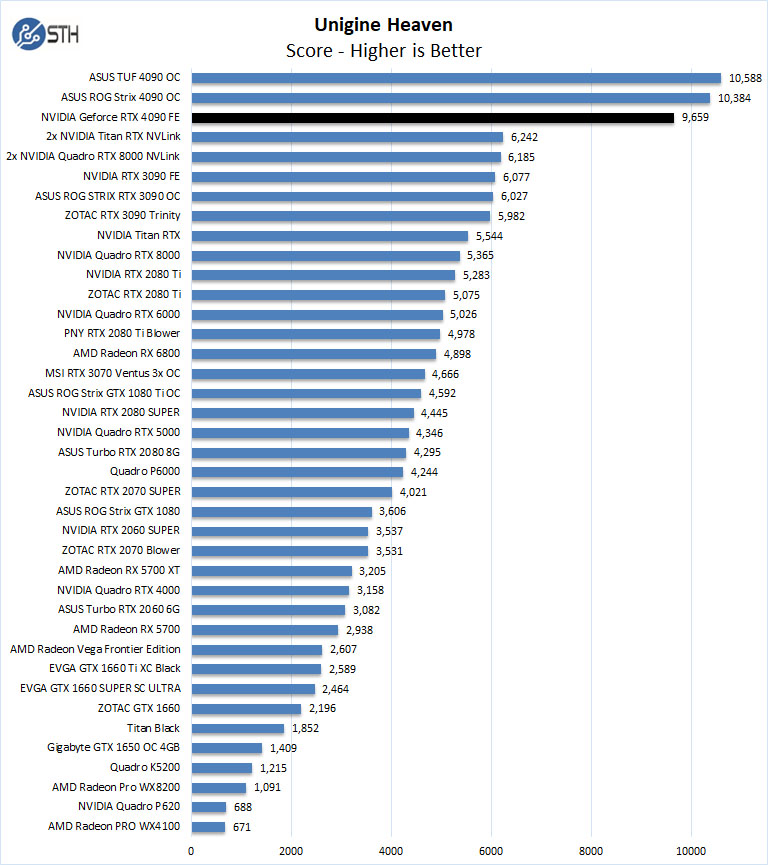
With Unigine Heaven, it almost doubles SLI rig scores from past generations of GPUs. The NVIDIA GeForce RTX 4090 FE dropped in performance on this older benchmark.
Here we will run the NVIDIA GeForce RTX 4090 FE through 3DMark-related benchmarks.
3Dmark – Port Royal
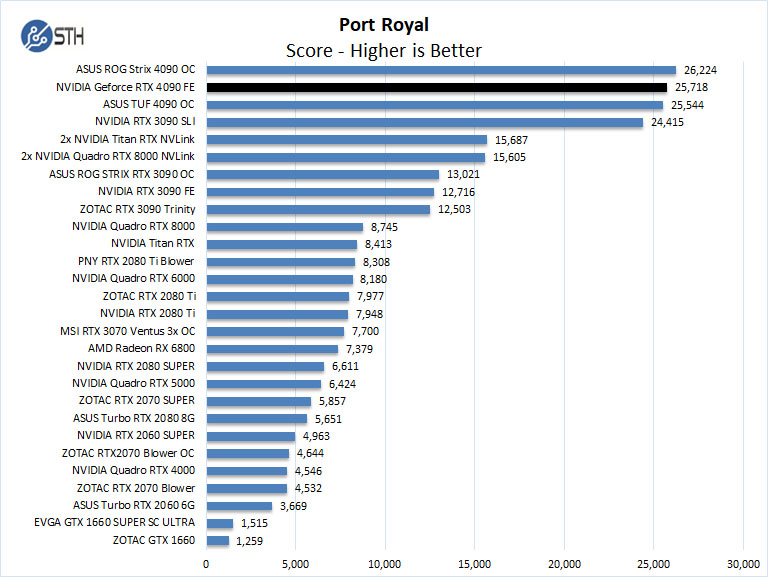
3DMark – Time Spy
This is a well-known Direct 12 Benchmark from Futuremark. It is often used to benchmark high-performance gaming PCs. It is best suited for benchmarking the latest graphics cards.
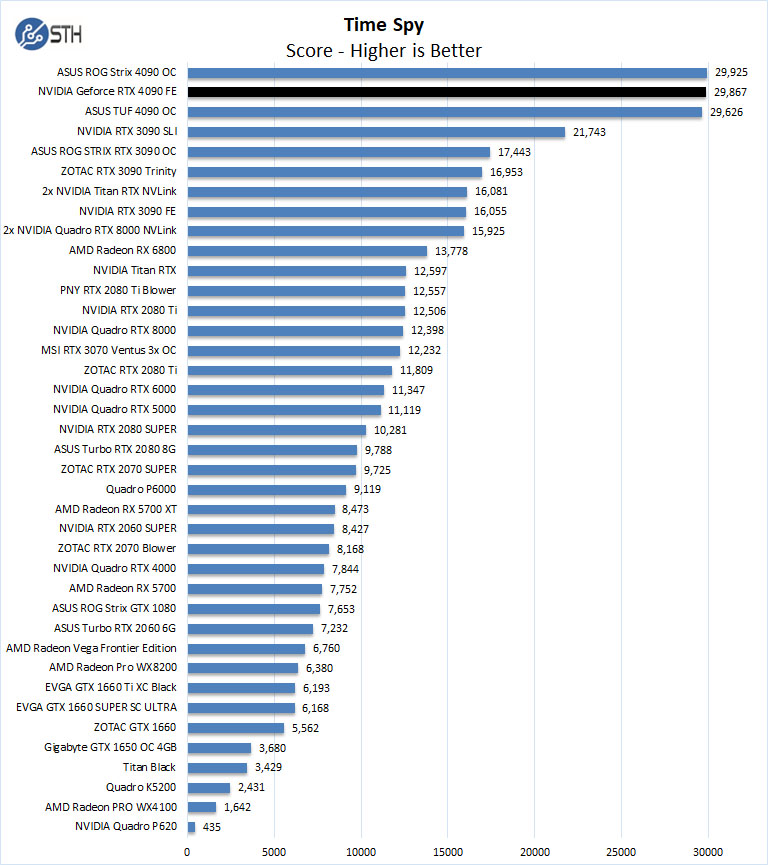
3DMark – Fire Strike
3DMark Fire Strike is a DirectX 11 benchmark designed for today’s high-performance gaming PCs using DirectX 11.
We will run three different Fire Strike Benchmarks:
- Fire Strike – DirectX 11 Benchmark designed to test high-performance PCs.
- Fire Strike Ultra – Testing 4K UHD rendering.
- Fire Strike Extreme – Enhanced version of Fire Strike.
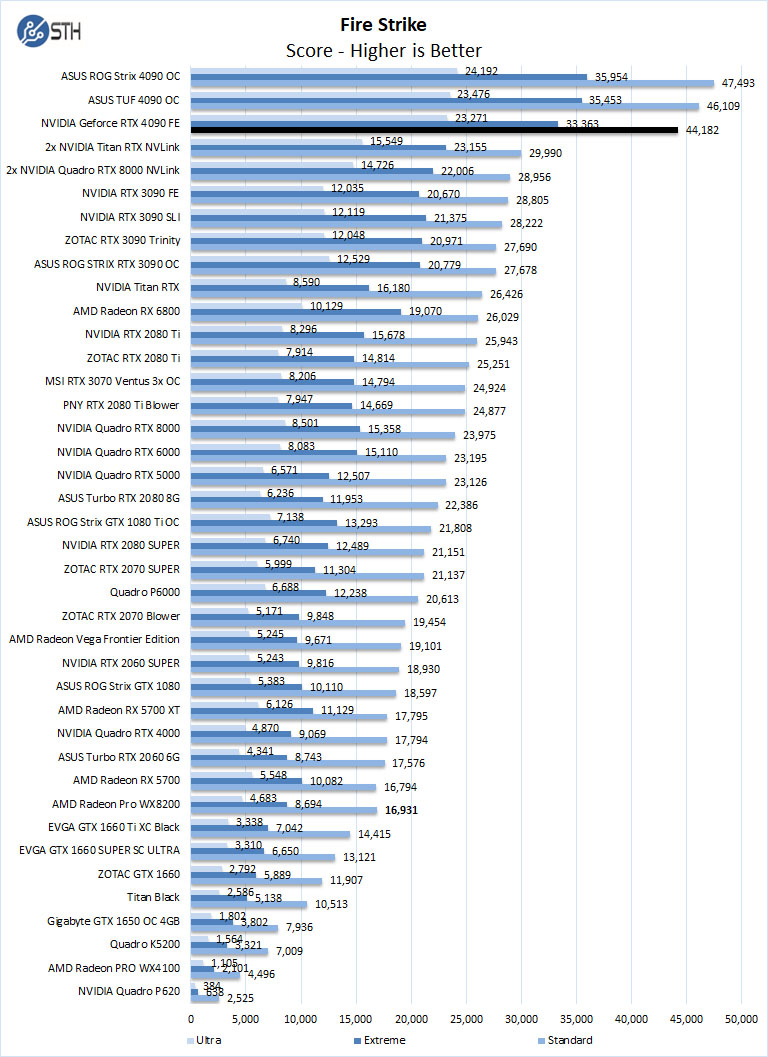
3Dmark – Speedway
This is a new benchmark in the 3Dmark suite.
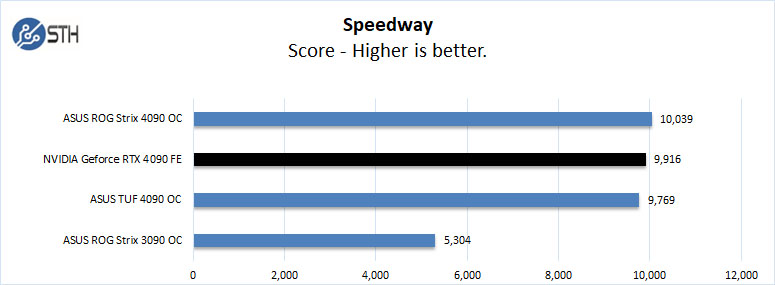
All three cards show good results in these benchmarks, with a lead going to the Strix version.
Next, we will look at the NVIDIA GeForce RTX 4090 FE power and temperature tests and then give our final words.




So the side with the GPU and most VRAM is the bottom of the card? Never thought of it that way, and can really only see it from an ATX point of view.